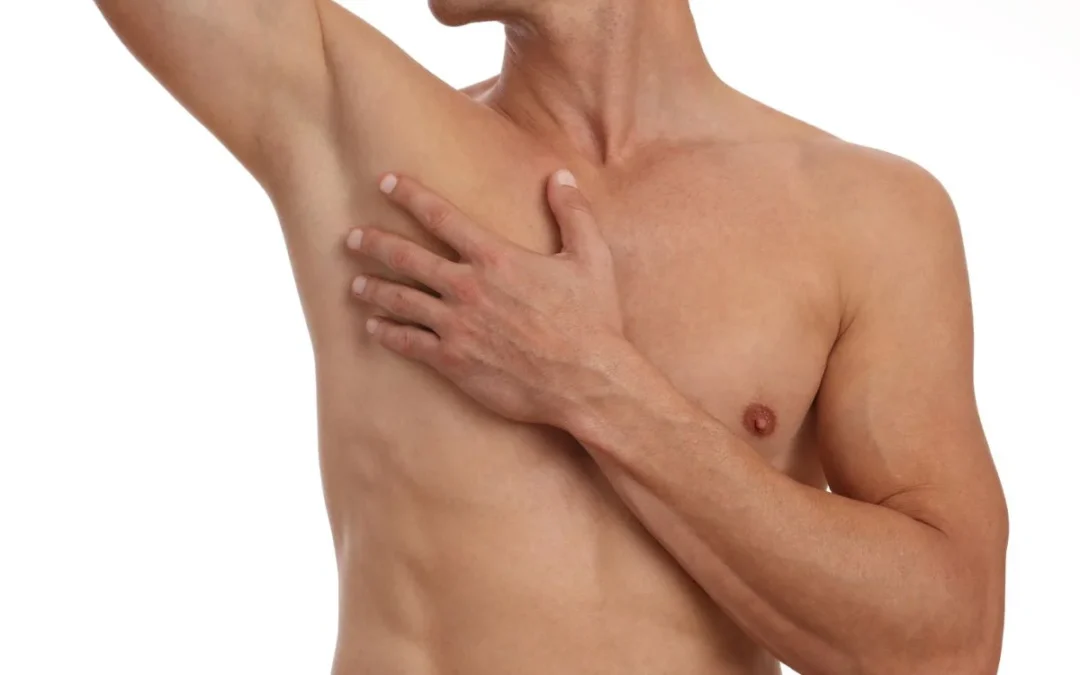Bilateral subcutaneous mastectomy is a surgical procedure that is part of the gender affirmation process for many transgender or non-binary people. This surgery involves the removal of breast tissue and fatty tissue from both breasts with the aim of creating a more masculine or androgynous appearance in trans men or non-binary people. In other words, to achieve chest masculinisation. However, as with any surgery, scarring is an inevitable part of the healing process. In this article, we will explore the types of bilateral subcutaneous mastectomy scars, their importance and how to care for them properly.
Types of mastectomy scars
Scarring is a natural part of any surgical procedure, and bilateral subcutaneous mastectomy is no exception. During surgery, incisions are made in the skin to access and remove breast tissue. When these incisions are completely healed, scars appear which, usually, over time, will become barely visible. The appearance and location of the scars may vary depending on the technique used by the surgeon and the individual characteristics of the patient.
Depending on the size and shape of the breasts, the quality of the skin and the needs of the individual, either a FTM top surgery technique or other technique may be used. The resulting mastectomy scars will differ depending on the technique used by the breast surgeons.
Periareolar technique
The periareolar incision technique in bilateral mastectomy involves making a circular incision around the areola to remove the breast tissue. The remaining skin is stretched and sutured into place. This technique is usually performed when the breasts are small and the skin is elastic. It allows the scars to be minimal and to be concealed with the change in colour of the areolas.
Extended periareolar technique
This trans mastectomy technique is usually performed on patients with large breasts. It basically consists of making the periareolar incision plus another incision that extends towards the armpit area through which the glandular tissue and fat is removed. In this case, the scars are more evident than in the periareolar technique, although over time they may be concealed by body hair.
Free nipple graft technique
When the breasts are very large or when the patient is considered to be a “heavy” smoker, the surgeon usually opts for this technique which consists of using areola grafts during the surgery. In this case, the mastectomy scars will depend on the individual needs of each patient during the procedure.
Liposuction of the area
All these techniques can be combined with prior liposuction to reduce the size of the scars and improve the contour of the chest wall. The scars from liposuction of fatty breast tissue are minimal, just a few millimetres in size.
Evolution of mastectomy scars
As with any surgical procedure, scars may initially be pink or red in colour and have a raised or lumpy appearance. Over time, mastectomy scars tend to soften, flatten and fade, although this process can take several months.
It is important to bear in mind that the way scars heal and evolve can vary from person to person and depends on many factors, such as genetics, age, health, whether they are smokers or not, their exposure to the sun, etc. as well as their post-surgery care.
However, there are some general guidelines that can be followed to care properly for transgender mastectomy scars and promote optimal healing. In this link you can see the results of FTM top surgery.

How to care for your scar following mastectomy surgery
Scar care in bilateral subcutaneous mastectomy starts from the time of the surgery. It is important to follow the surgeon’s instructions regarding post-surgical care and the use of any prescribed medication. Some tips for caring for a mastectomy scar are:
-
- The use of a compression garment is often recommended to protect the incisions and reduce swelling, as well as to facilitate shaping and adaptation of the skin to its new contour. It is therefore important to use this when and as directed.
- It is essential to keep the incisions clean and dry to prevent infection. During the first few days after the mastectomy and at least until the stitches are removed, it is recommended that you do not use a towel to dry the scars. It is advisable to always use a hairdryer with cold air.
- Immersion in still water, such as swimming pools or bathtubs, should be avoided for the first few weeks after surgery.
- It is also important to avoid the scar area being directly exposed to the sun for at least the first year after the mastectomy. Ultraviolet radiation can cause changes in skin pigmentation and delay healing.
- It is important to eat well and stay hydrated to promote healing of the incisions. A balanced diet rich in vitamins and minerals, especially vitamin C and protein, can help speed up recovery and promote collagen formation in the skin, which is important for healing.
- It is essential to avoid smoking and drinking alcohol during the process of recovering from surgery. Smoking is very detrimental to proper healing and alcohol can delay recovery. If possible, patients should attempt to stop smoking weeks before their surgery and continue not to smoke until the wound has healed well.
- It is important to follow the surgeon’s recommendations regarding physical activity after a bilateral subcutaneous mastectomy. During the first few weeks, it is important to avoid heavy lifting, strenuous exercise or sudden movements that could put a strain on the incisions. However, it is important to stay active and move carefully to avoid the formation of excessive scar tissue.
- Gentle massage of the scar area is essential once the surgeon has given their permission. This can help to soften scars and reduce the formation of thick scar tissue.
- Products recommended by the medical team can be used, such as rosehip oil, creams or patches that promote good healing. In addition, it is also recommended, once the surgeon advises it, to massage the area using gentle circular movements for a few minutes a day.
You can learn about Samuel’s experience of his transgender mastectomy in this video.
If you have more questions about what mastectomy scars, make an appointment with the IM GENDER team and we will inform you.



